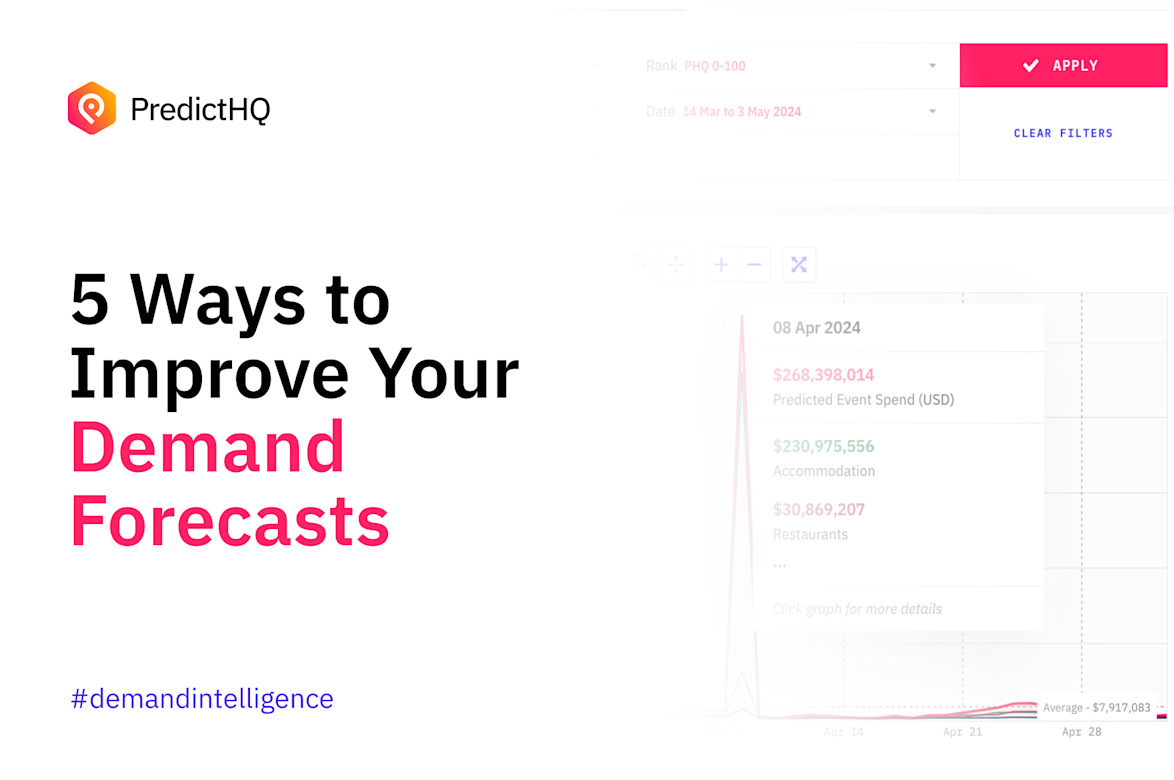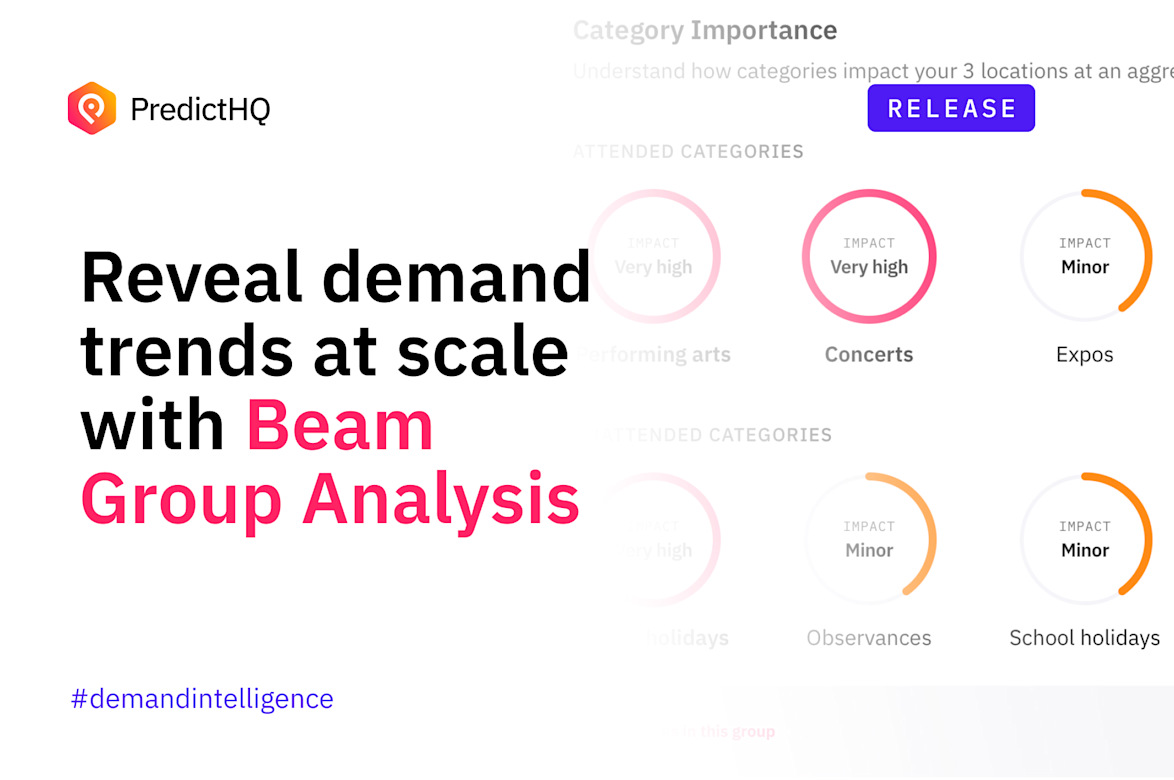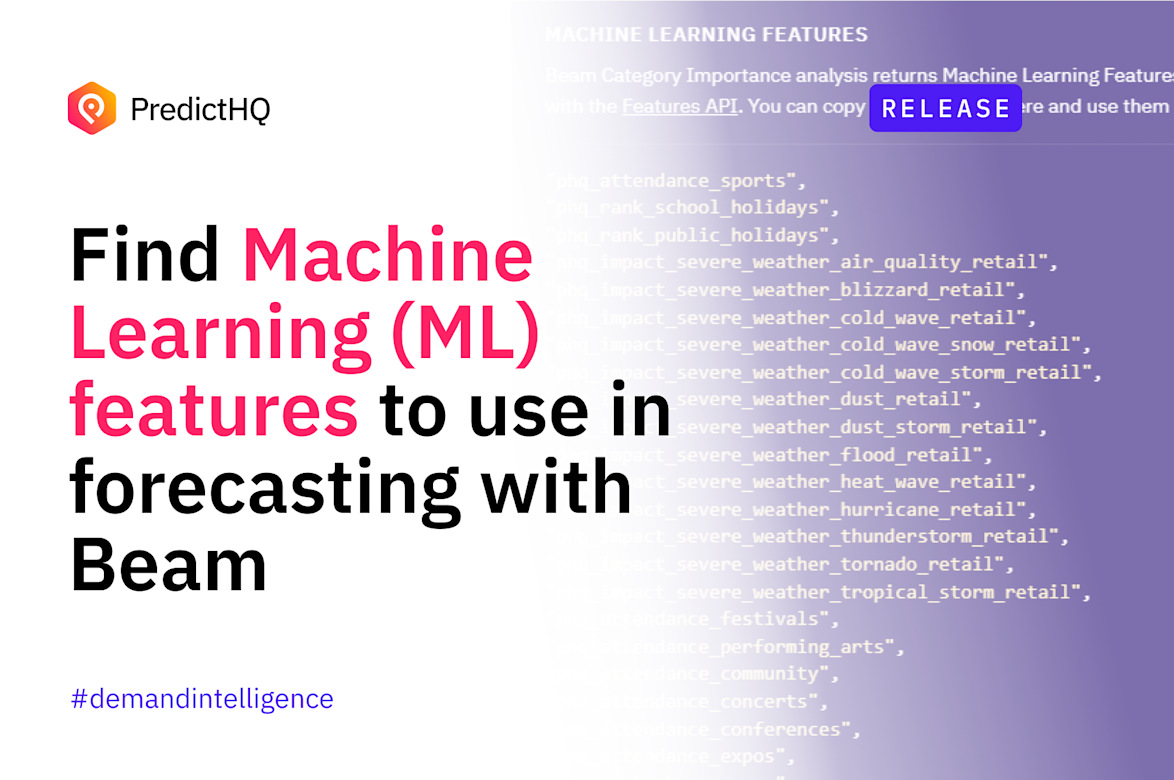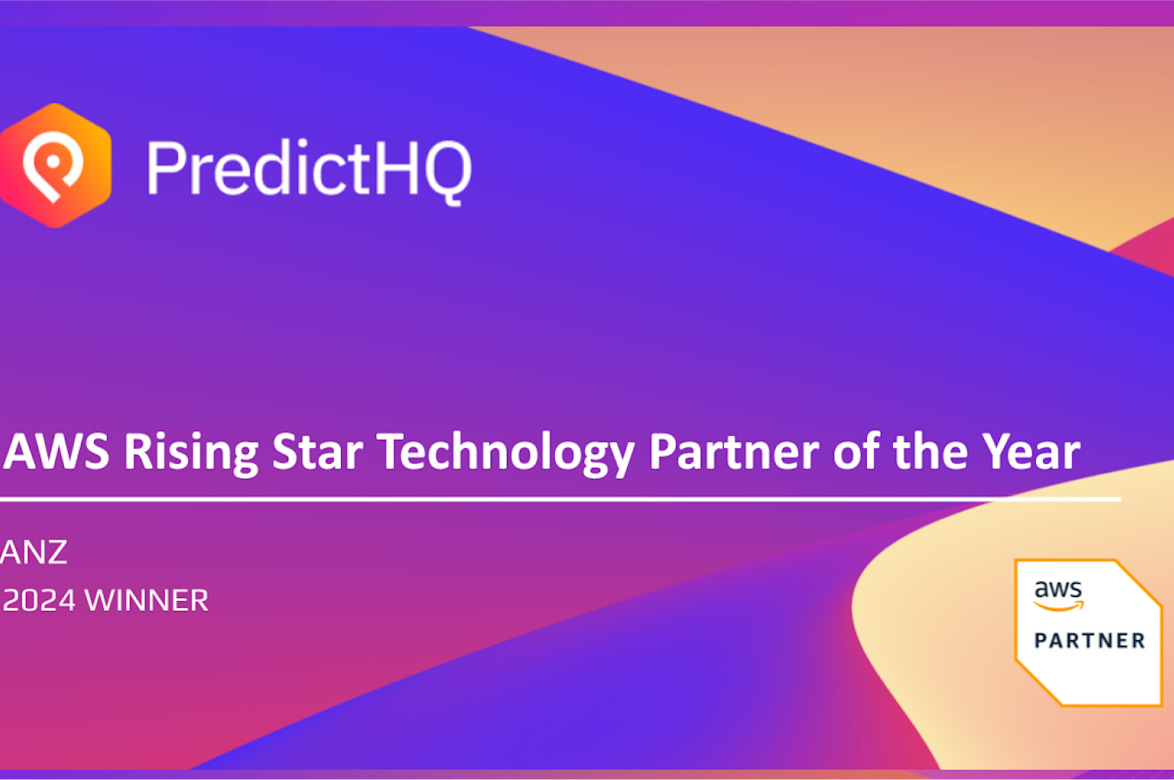Event Impact Analysis: A Data-Driven Approach to Restaurant Forecasting

Events are major catalysts of restaurant demand
The restaurant industry is fiercely competitive, demanding constant innovation to stand out and capture customer loyalty. Data analytics are becoming an increasingly powerful weapon, with leading restaurants leveraging event impact analysis to reduce forecasting errors and gain a competitive edge.
What is event impact analysis?
Event impact analysis is a predictive data tool that offers insights into how events like conferences, sporting events, and holidays drive demand volatility for restaurants of all sizes. This type of analysis provides data on a variety of factors, such as the number of attendees, consumer spending, and the overall impact on sales during and after the event.

This powerful technique allows restaurants to predict the local event landscape's impact on their individual establishments at scale, such as the following examples:
For a global QSR chain, certain kinds of festivals can drive demand for their breakfast offerings up by ~45% per impacted store.
For another of the USA's top ten QSR companies, heat waves can drive demand for ice cream up by 124%, but down for burgers down by on average 41%.
Salesforce Dreamforce, a single conference, drove a 190% increase in demand for skinny lattes for a local coffee shop.
In this article, we’ll explore five ways leading restaurants use event impact analysis to adjust their inventory levels, staffing, and marketing strategies to capitalize on the uptick in demand during key events — and you can, too.
5 Ways Restaurants Use Event Impact Analysis To Drive Growth
1. Improve forecasting models for more accurate demand predictions
Relying solely on historical transaction data for demand forecasting overlooks the dynamic nature of market conditions. By integrating real-time, high-quality external data and intelligence, businesses can significantly improve forecasting accuracy. This AI-powered approach allows for quick adaptation in response to current events, enhancing decision-making and profitability with precise forecasting models.
For example, food delivery company Favor leverages event impact analysis to boost forecasting accuracy. This innovative approach, incorporating features based on upcoming events, has yielded a 5-6% improvement in MAPE (mean absolute percentage error) for their demand forecasting. Favor, known for delivering anything within an hour across 200 Texas cities, saw the most significant benefits in smaller markets. Learn how businesses across industries are integrating events into their models and seeing value.
2. Identify demand catalysts to improve supply chain efforts and inventory levels
The restaurant industry loses $25 billion annually due to inaccurate forecasts and poor foot traffic predictions. By improving forecasting accuracy, individual restaurants can see massive MAPE and prediction improvements — which for some high-volume establishments, translates to millions of dollars saved. Learn more about reducing food waste with smarter supply chain forecasting.
We recently observed a 25% surge in burger orders at a fast casual restaurant coinciding with a major sports event. However while sports events are a clear driver, they're just one piece of the puzzle. For the most accurate forecasts, restaurants need to consider the cumulative impact of all nearby events that are relevant to their business demand. This might include concerts, festivals, conferences, or local school holidays. Understanding the specific events that are most impactful for your business is key to accurately predicting whether they'll compound or mitigate demand on game days.
3. Align staffing with event-driven demand to reduce labor costs and boost profitability
Labor forecasting for quick serve restaurants is high-impact and difficult to get right. With so many factors impacting footfall and demand, it's critical to ensure you have the right amount of staff scheduled to keep customers happy without wasting money on surplus staff.
Leading restaurants and their staff scheduling platforms leverage event impact analysis to enhance labor forecasting based on event-driven demand. Event data helps companies predict workload with pinpoint accuracy, enabling them to right-size staffing at the necessary times to handle the amount of expected demand.
For example, events improved restaurant forecasting up to 35% for Lineup, an AI-powered forecasting software that equips restaurant managers with the data they need to make better, faster decisions around labor. Train your forecasting models with events to identify peak days in advance, so you can guarantee the best customer service without having too many employees on the clock.
4. Avoid disruptions and traffic to ensure faster food deliveries
While you can’t control traffic, you can use event data to preempt and avoid it long before it begins to clog up roads. If you have a delivery arm to your business, getting ahead of traffic is a serious advantage as it powers your ability to shorten delivery times and provide more timely, reliable customer service.
By leveraging advanced predictive analytics and event impact analysis, restaurant operators are proactively identifying potential traffic bottlenecks and rerouting their delivery drivers to more efficient paths. Event impact analysis is used by multiple leading rideshare, grocery, and snack delivery companies to track disruptive events and work around these areas, or shut down service in impacted neighborhoods when traffic is at an event-driven stand still.
5. Identify events better targeting and timing for ad campaigns
Event-based marketing is all about advertising in the right place, and at the right time. By using local events for targeted marketing promotions, event-based marketing shifts the focus away from the product, and onto what’s going on in customers’ lives and environments.
You can’t target individuals as easily these days with increased privacy rules, but you can target events during which people are most likely to order from your restaurant. By creating an association in customers’ minds between an event or holiday with your brand, you can increase the likelihood of selling more during that occasion.
Restaurant marketing teams are making more informed decisions about how to allocate their resources and tailor their marketing efforts to customers based on the events they are interested in. Join the ranks of competitive restaurants leveraging event impact analysis to improve marketing ROI.
Accurate demand predictions drive profitability
Event impact analysis is a valuable tool for businesses looking to stay ahead of the curve and make informed decisions based on data-driven insights. By leveraging this technology, organizations are understanding how events impact their operations, identifying opportunities and risks, and optimizing their marketing efforts to drive growth and profitability.











